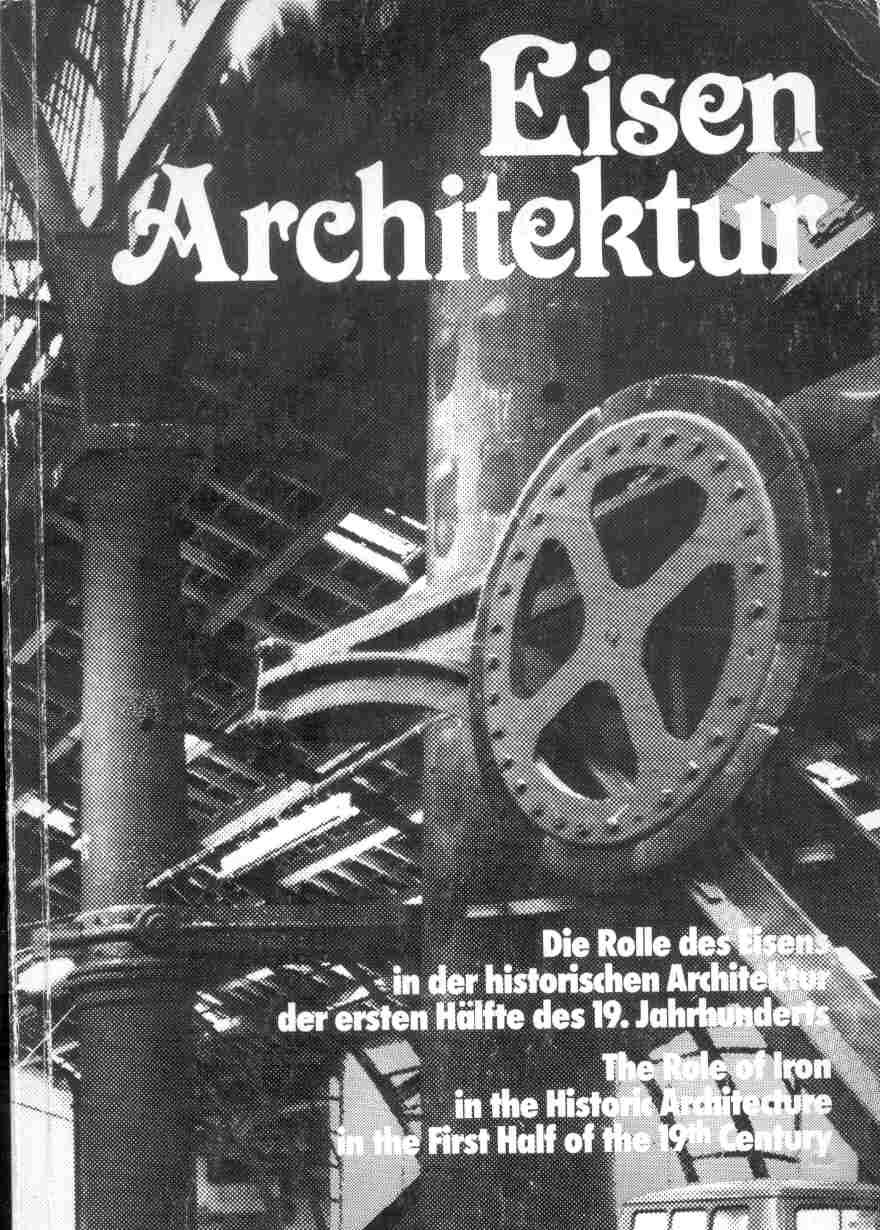Eisen Architekture: Die Rolle des Eisens in der historischen Architektur der ersten Hälfte des 19. Jahrunderts / The Role of Iron in the Historic Architecture in the first Half of the 19th Century
 |
ICOMOS, Deutsches Nationalkomitee ( Bad Ems, 18-22 September 1978) (327 pages) (out of stock/épuisé/agotado) |
Inhalt / Index
- Vorwort.![]()
- Eisen in der Architektur vor dem Aufkommen der Eisenarchitektur, Walter Haas. ![]()
- Frühe industrielle Bauformen in Berlin; Eisenguß, Zinkguß, Terrakotta, Martin Sperlich ![]()
- Der eiserne Dachstuhl des Kölner Domes, Herbert Eller. ![]()
- Die eisernen Brücken - einige Aspekte ihrer Entwicklung, Ernst Werner. ![]()
- Entwicklungsstruckturen der Eisenarchitektur im 19. Jahrhundert vom Brückenbau zum Hallenbau, Burkhard Bergius. ![]()
- Die Sayner Hütte und ihre baugeschichtliche Einordnung, Paul - Georg Custodis.![]()
- Die Königshütte in Bad Lauterberg - ein Paralelbau zur Sayner Hütte, Rainer Slotta.![]()
- Die Rolle des Gußeisens in der Architektur Badens 1810-1860, Hans-Jakob Wörner. ![]()
- Eisenkonstruktionen des 19. Jahrhunderts in Großbritannien, Giselher Hartung. ![]()
- Französische Stahlarchitektur im 19. Jahrhundert, Christian Beutler. ![]()
- Technologische Aspekte früher englischer Eisenarchitektur, R.S. Fitzgerald. ![]()
- Eisenarchitektur im Wiener Historismus, Renate Wagner-Rieger. ![]()
- Eisen als Baumaterial in der schweizerischen Architektur zwischen 1825 und 1875, Hans Martin Gubler. ![]()
- Dänische Beispiele der Eisenarchitektur um die Jahrhundertmitte, Jorgen Sestoft. ![]()
- Eisen als Dekorationsmittel im 19 Jahrhundert in Luxemburg, Alfred Steinmetzer. ![]()
- Zusammenfassung der Diskussion. ![]()
Index
- Foreword.![]()
- Architectural Uses of Iron Before the emergence of Iron Architecture, by Walter Haas. ![]()
- The Iron Structures of the Roof Frame and Central Tower of Cologne Cathedral, by Herbert Eller. ![]()
- Iron Bridges - Some aspects of Development, by Ernst Werner. ![]()
- Development Structures in 19th Century Iron Architecture - from Bridge to Hall Construction, by Burkhard Bergius. ![]()
- Sayner Hütte and its Place in Architectural History, by Paul-Georg Custodis.![]()
- Königshütte of Bad Lauterberg - a Building Paralleling Sayner Hütte, by Rainer Slotta.![]()
- 19th Century Greenhouses - a Contribution to Glass-Iron Architecture, by Ruth-Maria Ullrich. ![]()
- The Role of Iron in Baden Architecture 1810-1860, by Hans-Jakob Wörner. ![]()
- 19th century Iron structures in Great Britain, by Giselher Hartung. ![]()
- Examples of French 19th Century Steel Architecture, by Christian Beutler. ![]()
- Technological Aspects of early English Iron Architecture, by R.S. Fitzgerald. ![]()
- Viennese Iron Architecture in Historism, by Renate Wagner - Rieger. ![]()
- Iron as a Construction Material in Swiss Architecture between 1825 and 1875, by Hans Martin Gubler. ![]()
- Danish Examples of Iron Architecture Around the Middle of the Century, by Jorgen Sestoft. ![]()
- Iron as a Material for Decoration in 19th Century Luxembourg, by Alfred Steinmetzer. ![]()
